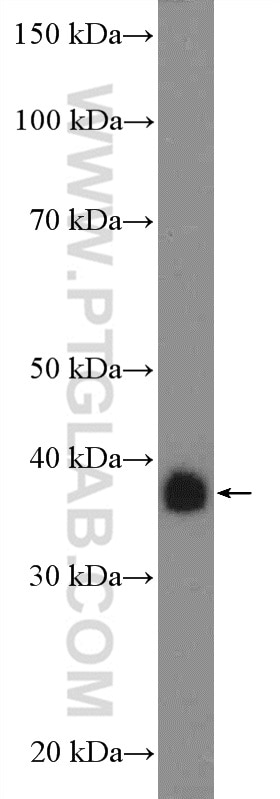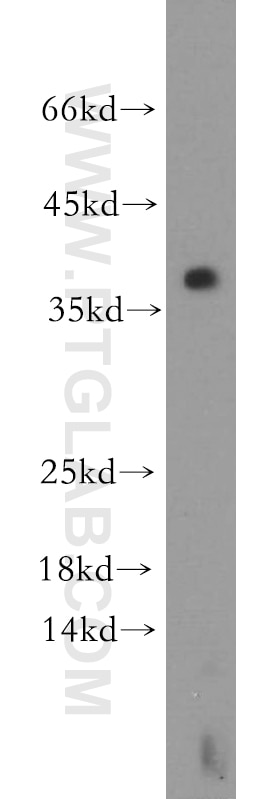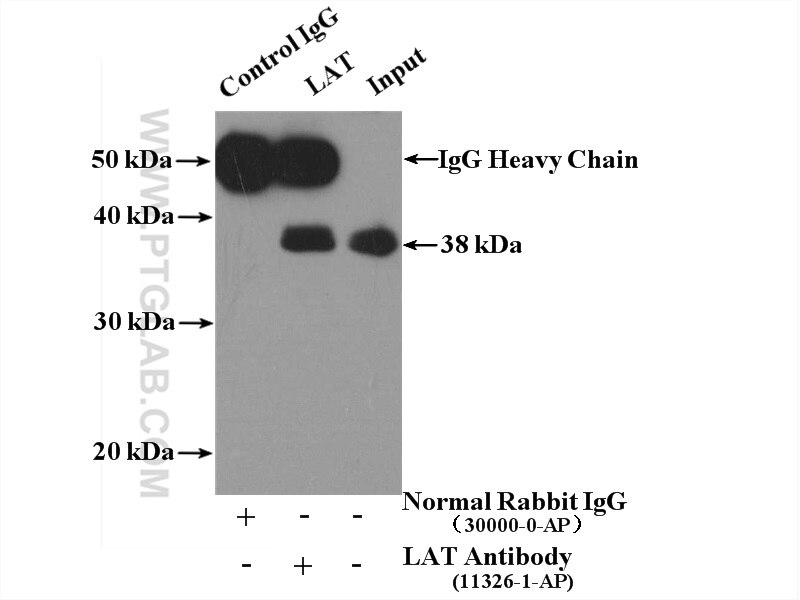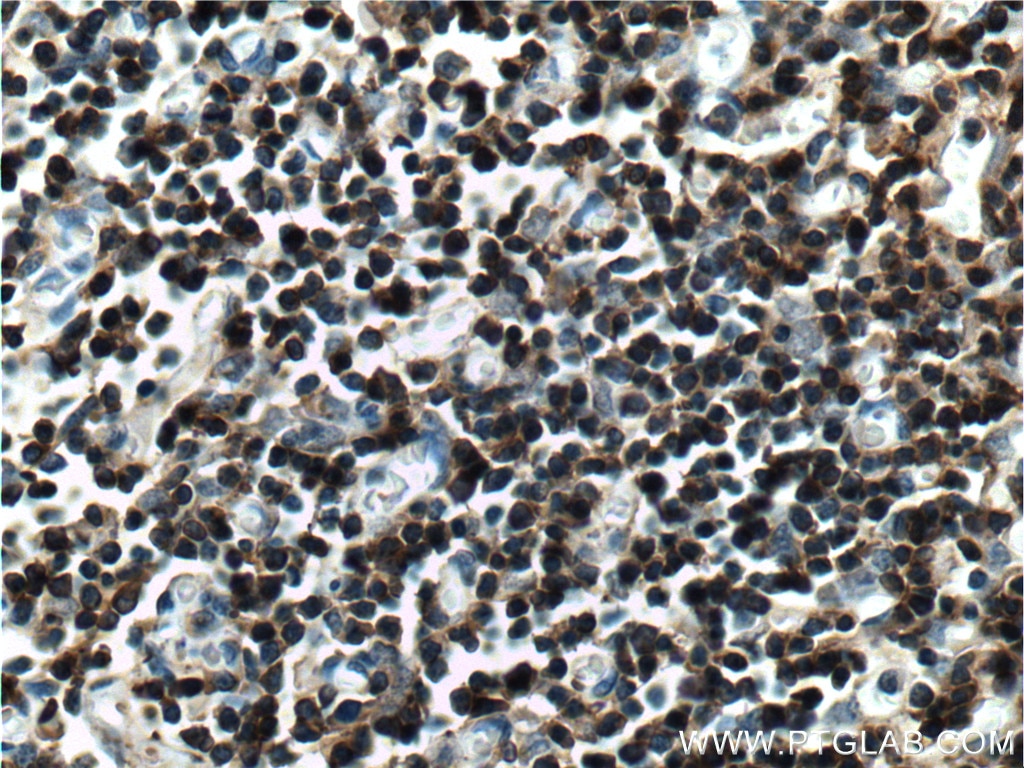LAT Polyclonal antibody
LAT Polyclonal Antibody for WB, IP, IHC, ELISA
Host / Isotype
Rabbit / IgG
Reactivity
human, mouse
Applications
WB, IP, IHC, ELISA
Conjugate
Unconjugated
Cat no : 11326-1-AP
Synonyms
Validation Data Gallery
Tested Applications
| Positive WB detected in | Jurkat cells, mouse thymus |
| Positive IP detected in | Jurkat cells |
| Positive IHC detected in | human thymus tissue Note: suggested antigen retrieval with TE buffer pH 9.0; (*) Alternatively, antigen retrieval may be performed with citrate buffer pH 6.0 |
Recommended dilution
| Application | Dilution |
|---|---|
| Western Blot (WB) | WB : 1:500-1:2000 |
| Immunoprecipitation (IP) | IP : 0.5-4.0 ug for 1.0-3.0 mg of total protein lysate |
| Immunohistochemistry (IHC) | IHC : 1:50-1:500 |
| It is recommended that this reagent should be titrated in each testing system to obtain optimal results. | |
| Sample-dependent, Check data in validation data gallery. | |
Published Applications
| WB | See 3 publications below |
| IHC | See 2 publications below |
Product Information
11326-1-AP targets LAT in WB, IP, IHC, ELISA applications and shows reactivity with human, mouse samples.
| Tested Reactivity | human, mouse |
| Cited Reactivity | human, mouse |
| Host / Isotype | Rabbit / IgG |
| Class | Polyclonal |
| Type | Antibody |
| Immunogen | LAT fusion protein Ag1868 |
| Full Name | linker for activation of T cells |
| Calculated Molecular Weight | 262 aa, 28 kDa |
| Observed Molecular Weight | 36-38 kDa |
| GenBank Accession Number | BC011563 |
| Gene Symbol | LAT |
| Gene ID (NCBI) | 27040 |
| RRID | AB_10695624 |
| Conjugate | Unconjugated |
| Form | Liquid |
| Purification Method | Antigen affinity purification |
| Storage Buffer | PBS with 0.02% sodium azide and 50% glycerol pH 7.3. |
| Storage Conditions | Store at -20°C. Stable for one year after shipment. Aliquoting is unnecessary for -20oC storage. 20ul sizes contain 0.1% BSA. |
Background Information
LAT is a membrane-localized adaptor protein which is primarily concentrated in microdomains by palmitoylation. LAT plays a central role in T-cell activation by nucleating signaling complexes that are critical for the propagation of T-cell signals from the plasma membrane to the cellular interior. In addition to being a positive regulator of T cell signaling, LAT also recruits several negative regulatory proteins, including kinases, phosphatases, and ubiquitin ligases, which ultimately leads to signal termination. LAT is subject to ubiquitylation, and ubiquitin-resistant mutants of LAT display enhanced signaling.
Protocols
| Product Specific Protocols | |
|---|---|
| WB protocol for LAT antibody 11326-1-AP | Download protocol |
| IHC protocol for LAT antibody 11326-1-AP | Download protocol |
| IP protocol for LAT antibody 11326-1-AP | Download protocol |
| Standard Protocols | |
|---|---|
| Click here to view our Standard Protocols |
Publications
| Species | Application | Title |
|---|---|---|
Sci Rep A ceRNA-associated risk model predicts the poor prognosis for head and neck squamous cell carcinoma patients. | ||
Hepatol Int Upregulation of CD147 protects hepatocellular carcinoma cell from apoptosis through glycolytic switch via HIF-1 and MCT-4 under hypoxia. | ||
Eur J Haematol Interferon gamma regulates a complex pro-survival signal network in chronic lymphocytic leukemia | ||
Nat Commun Cell volume controlled by LRRC8A-formed volume-regulated anion channels fine-tunes T cell activation and function |





